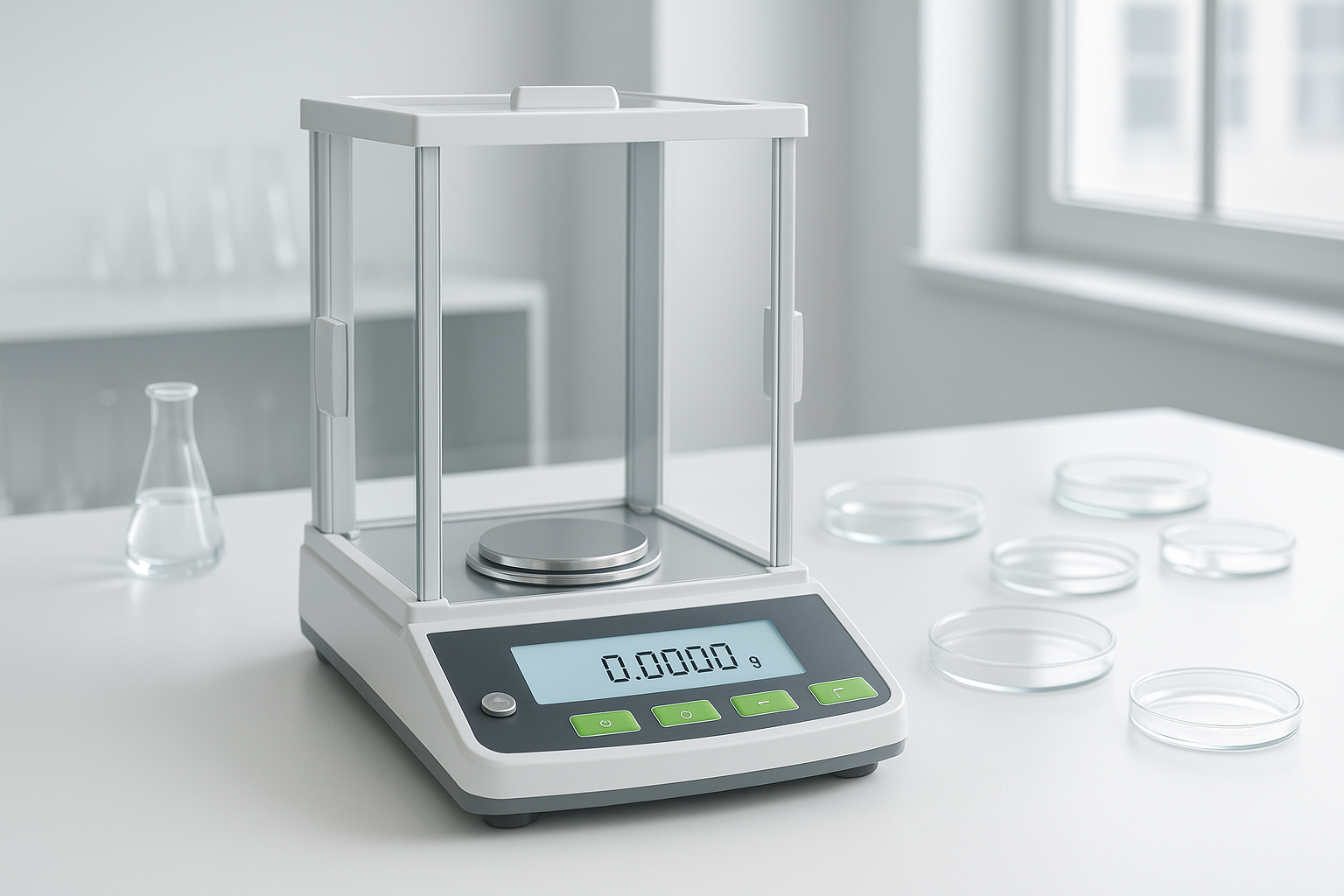
Analytical balances are essential tools in modern laboratories where precision matters most. These high-performance instruments are capable of measuring even the tiniest amounts of mass—down to 0.00001 grams or 0.01 milligrams.
Whether you’re preparing chemical formulations, conducting pharmaceutical research, or ensuring quality control in production, an analytical balance offers the sensitivity and accuracy your work demands.
Yet, with great sensitivity comes great responsibility. To fully benefit from what these instruments offer, you need to understand how they function, how to use them correctly, and what can influence their performance.
What Are Analytical Balances?
An analytical balance is a type of scientific scale engineered for high-precision mass measurement. Typically enclosed in a transparent draft shield, this balance isolates the weighing pan from environmental factors like air currents and dust. It’s capable of measuring objects up to around 320 grams, with readability as fine as 0.01 mg. This makes it ideal for handling powders, liquids, or granular substances where even the slightest discrepancy can affect results.
Unlike standard balances, analytical models do not directly measure mass. Instead, they determine weight using an electromagnetic force compensation mechanism. An electromagnet generates a counteracting force to balance the sample, and the required electrical current is used to calculate the mass. That value is then displayed digitally, offering real-time precision feedback.
Where Are Analytical Balances Used?
These balances find application across a wide range of fields. Some of the most common uses include:
- Sample preparation in pharmaceutical labs
- Density analysis in materials science
- Formulation and recipe creation in industrial R&D
- Pipette calibration in biochemical research
- Checkweighing during quality inspections
- Animal weighing for biology experiments
- Differential and interval weighing in complex chemical analysis
Their ability to offer consistent, reproducible measurements makes them indispensable in industries where accuracy affects product safety, efficacy, or compliance.
Understanding the Components
To get the most out of your analytical balance, it’s helpful to know its key components and how each contributes to its overall function:
- Weighing Pan: The surface on which containers or samples are placed.
- Draft Shield: Enclosure that prevents airflow from disturbing the weighing process.
- Tare Button: Used to zero out the weight of containers or weigh paper.
- Display Screen: Shows weight readings and operational messages.
- Leveling Feet & Indicator: Helps you achieve a level surface for accurate readings.
- Internal Sensors: Many modern balances include sensors for self-calibration and automatic error detection.
Advanced models may offer touchscreen interfaces, automatic doors, and even programmable workflows for routine tasks.
Proper Usage: Step-by-Step Guide
Using an analytical balance properly ensures that results remain consistent and reliable. Here’s how to get started:
- Place on a Stable Surface
Avoid placing your balance near doors, windows, or HVAC vents. Vibrations and air drafts can cause fluctuation in readings. - Level the Balance
Check the built-in spirit level. Adjust the leveling feet until the bubble is centered. - Warm-Up Time
If the balance has been powered off, allow it to warm up for at least 30 minutes before use. This stabilizes internal electronics and sensors. - Tare Before Measuring
Place your container or weighing paper in the center of the pan. Close the draft shield and press the tare button to reset the reading to zero. - Handle Samples with Care
Always use gloves or tweezers. Fingerprints can add unexpected mass and affect precision. - Add Sample and Stabilize
Add your material in small increments. Wait for the display to stabilize before recording the weight. - Clean After Use
Use a soft brush or lint-free cloth to remove any residues. Avoid using harsh chemicals that might damage the surface.
Environmental Factors That Affect Performance
Despite their accuracy, analytical balances are sensitive to external conditions. Several environmental variables can interfere with reliable weighing:
- Temperature Fluctuations: Warm or cold samples can cause convection currents inside the draft shield. Allow all items to reach room temperature before weighing.
- Air Currents: Even minor breezes can cause the displayed weight to drift. Always keep doors and windows closed during operation.
- Static Electricity: Especially in low-humidity environments, static can interfere with sensors. Anti-static mats, ionizers, or metal weighing containers can help.
- Vibration: Machinery or foot traffic nearby can shake the table. Use an anti-vibration pad to minimize this.
- Magnetic Fields: Magnetic materials can distort the electromagnetic field used for weighing. Keep magnets and similar objects far from the balance.
Calibration and Maintenance
Regular calibration is critical for keeping your analytical balance accurate. There are two types:
- Internal Calibration: Performed automatically by the balance, usually triggered by time intervals or environmental changes.
- External Calibration: Requires certified calibration weights and manual input. Ideal when the balance is moved or after significant atmospheric changes.
Routine maintenance should include:
- Repeatability Testing: Weigh the same object multiple times and compare results.
- Cornerload Test: Check weight consistency when placed at different spots on the pan.
- Linearity Test: Ensure readings are accurate across the balance’s full capacity range.
If you notice instability, unresponsive readings, or drift, it may indicate contamination, internal damage, or environmental stress. Don’t ignore these signs—prompt servicing may be needed.
Final Thoughts: Getting the Most From Your Balance
Analytical balances might be small in size, but their impact on scientific and industrial accuracy is massive. When used and maintained properly, these devices offer unparalleled precision. But without proper care, even the most advanced models can fail to deliver trustworthy data.
Keep your lab environment controlled. Calibrate often. Handle your samples with respect. And most of all, don’t treat your analytical balance as just another tool—it’s a trusted partner in your pursuit of accuracy.
